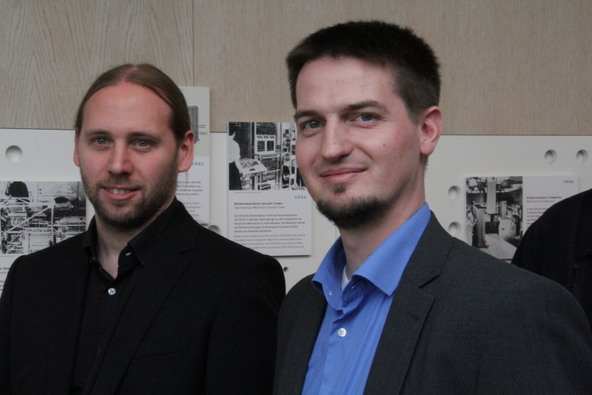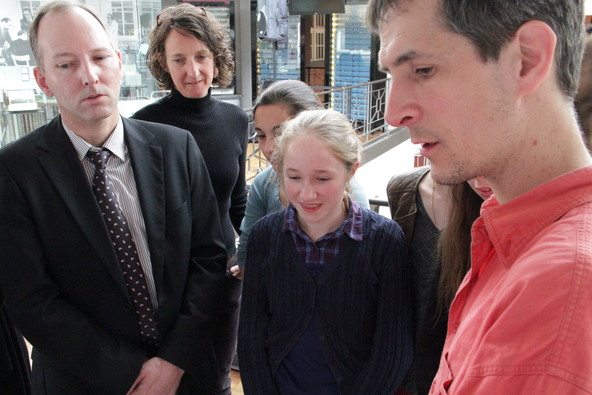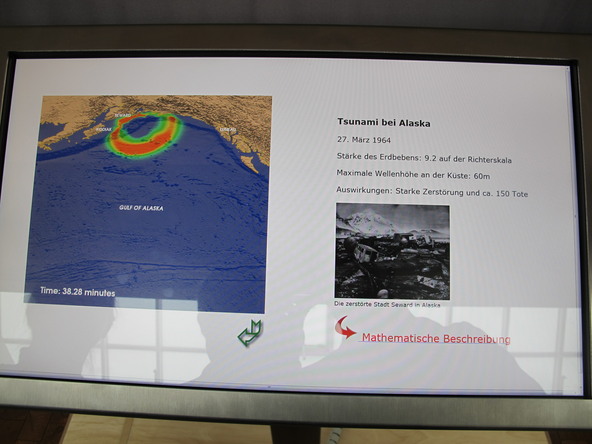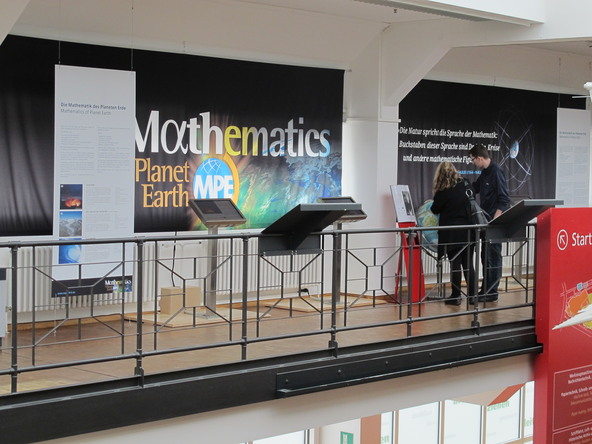Mathematics of Planet Earth at the Deutsches Technikmuseum
event
Credits
- Organization
A newly designed Mathematics of Planet Earth exhibition is shown at the Deutsches Technikmuseum in Berlin. It features three interactive stations on glaciers, volcanic ash and tsunamis and includes a lot of background information on the simulation of these natural phenomena and their mathematical models.
Volcanic eruptions, tsunamis, melting glaciers: Can they be calculated? How big is the contribution of mathematical sciences to the task of mastering these current ecological problems and catastrophes that massively challenge our world? The exhibition “Mathematics of Planet Earth” gives insights into these questions. It will be shown in the Deutsches Technikmuseum Berlin starting on March 27th. Several computer terminals offer interactive videos and simulations to specific examples and their mathematical models.
The exhibition was developed in the year 2013, which was themed “Mathematics of planet earth”. More than one hundred scientific institutions, universities, NGOs and research facilities all over the world united to create public awareness for the contribution of mathematics towards natural disasters and the ecological challenges our world faces. They were supported by the UNESCO, the International Science Council ICSU, and the International Council for Industrial and Applied Mathematics ICIAM.
One of the highlights was the creation of an exhibition whose contents are available under a free license. A competition was created, where users could send in virtual contributions like pictures, films, programs, or construction plans for physical exhibits. 29 groups from 11 different countries participated in that competition.
For the exhibition in the Deutsches Technikmuseum, three contributions have been picked by a jury and were didactically prepared. The selected projects are presented at touch screen stations that can be used interactively by the visitors. The exhibit “Dune Ash” of the University of Freiburg is a virtual simulation of a volcanic eruption. The calculation of the movement of an ash cloud is made visible for the visitors. “The future development of a glacier” of the Freie Universität Berlin explains how experts create models in order to predict glacier shifting. Finally, the exhibit “Tsunami” is a project from the University of Paris that shows a simulation of the evolution and computation of tsunami waves as well as a historical outline about the formation and the consequences of devastating tsunamis in the past.
The exhibition was organised in collaboration with IMAGINARY, a project of the Mathematisches Forschungsinstitut Oberwolfach founded by the Klaus Tschira Stiftung. It can be visited in the Deutsches Technikmuseum until June 27th and is located directly next to the permanent exhibition “The first computer” about Konrad Zuse.


Inauguration of the exhibition

Inauguration of the exhibition

Inauguration of the exhibition

Inauguration of the exhibition

Inauguration of the exhibition

Inauguration of the exhibition
Dr. Martin Nolte and Tobias Malkmus,
“Dune Ash”-team, University of Freiburg

Inauguration of the exhibition
Guillaume Jouvet explaining “The future of glaciers”

Inauguration of the exhibition
The project “Tsunami” is being explained by Emmanuel Audusse, Associate professor at University Paris 13.

Inauguration of the exhibition
Raouf Hamouda, Research Engineer (INRIA Rocquencourt - France)
Team member of the “Tsunami”-Project

Inauguration of the exhibition
Prof. Dr.-Ing. Horst Konrad Zuse, University of Applied Sciences Lausitz
Christian Stussak, IMAGINARY

Inauguration of the exhibition
participants of the “Girls Day”






All events
- 1 of 35
- next ›
